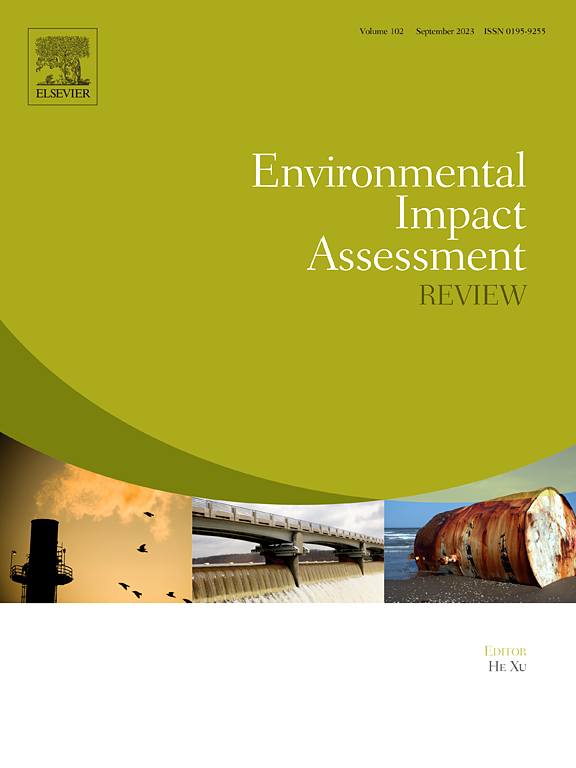基于BIM的装配式建筑现场精细施工碳排放计算自动化:模型开发与验证
IF 9.8
1区 社会学
Q1 ENVIRONMENTAL STUDIES
引用次数: 0
摘要
预制建筑显著地促进了低碳建筑的努力,特别是在现场施工阶段。传统的现场施工碳排放估算方法(CEA5)是将机器工作时间乘以经验能耗率,往往缺乏可操作性和可信度。因此,本研究提出了一种以装配式建筑施工过程为功能单元的CEA5计算方法,并利用ArchiCAD、Rhino和Grasshopper开发了基于建筑信息模型的工具。该工具可以从建筑工程方案中提取施工过程活动数据列表,并与预先建立的施工过程碳排放因子数据库相结合,计算出各个施工过程的碳排放量,并累计总CEA5。通过对中国北方多层钢结构的现场测量验证了该方法的可行性。所开发的方法成功地从ArchiCAD模型中提取了建筑设计、结构计算和构件生产的数据。对于产生总CEA5的98.3%的主要子项目,导出的过程活动数据与人工计算一致,其中1.7%需要人工调整。该方法提供了特定于构建子项目和子过程的精细计算结果。现场测量的施工过程的CE因素有助于建立更真实的参数数据库。它可以在项目前期快速计算CEA5,准确呈现各施工工序的碳排放比例,从而识别CEA5的主要来源,便于不同工艺间的比较,便于施工方案的低碳优化。本文章由计算机程序翻译,如有差异,请以英文原文为准。
Automating refined on-site construction carbon emissions calculation for prefabricated buildings based on BIM: Model development and validation
Prefabricated construction significantly contributes to low-carbon building efforts, especially during the on-site construction stage. Traditional methods for estimating on-site construction carbon emissions (CEA5), which multiply machine working time by empirical energy consumption rates, often lack operability and credibility. Hence, this study proposes an approach for calculating CEA5 based on the construction processes of prefabricated buildings as the functional unit, and it develops a building information model-based tool using ArchiCAD, Rhino, and Grasshopper. This tool enables the extraction of the construction process activity data list from building engineering plans and then integrates it with a pre-established database of construction process carbon emission factors to calculate the carbon emissions of each construction process and accumulate the total CEA5. Validation through on-site measurements at a multistory steel structure in northern China demonstrated the approach's feasibility. The developed method successfully extracted data from building design, structural calculations, and component production from the ArchiCAD model. For major subprojects generating 98.3 % of total CEA5, the exported process activity data was consistent with manual calculations, with 1.7 % requiring manual adjustments. The approach provides refined calculation results that are specific to the construction subprojects and subprocesses. The on-site measured CE factors for the construction processes contribute to a more realistic parameter database. It can be used in the early stages of a project to quickly calculate CEA5 as well as to accurately present the proportion of carbon emissions generated by each construction process, which allows for identification of the main sources of CEA5, facilitates comparisons between different processes, and enables the low-carbon optimization of construction plans.
求助全文
通过发布文献求助,成功后即可免费获取论文全文。
去求助
来源期刊

Environmental Impact Assessment Review
ENVIRONMENTAL STUDIES-
CiteScore
12.60
自引率
10.10%
发文量
200
审稿时长
33 days
期刊介绍:
Environmental Impact Assessment Review is an interdisciplinary journal that serves a global audience of practitioners, policymakers, and academics involved in assessing the environmental impact of policies, projects, processes, and products. The journal focuses on innovative theory and practice in environmental impact assessment (EIA). Papers are expected to present innovative ideas, be topical, and coherent. The journal emphasizes concepts, methods, techniques, approaches, and systems related to EIA theory and practice.
 求助内容:
求助内容: 应助结果提醒方式:
应助结果提醒方式:


